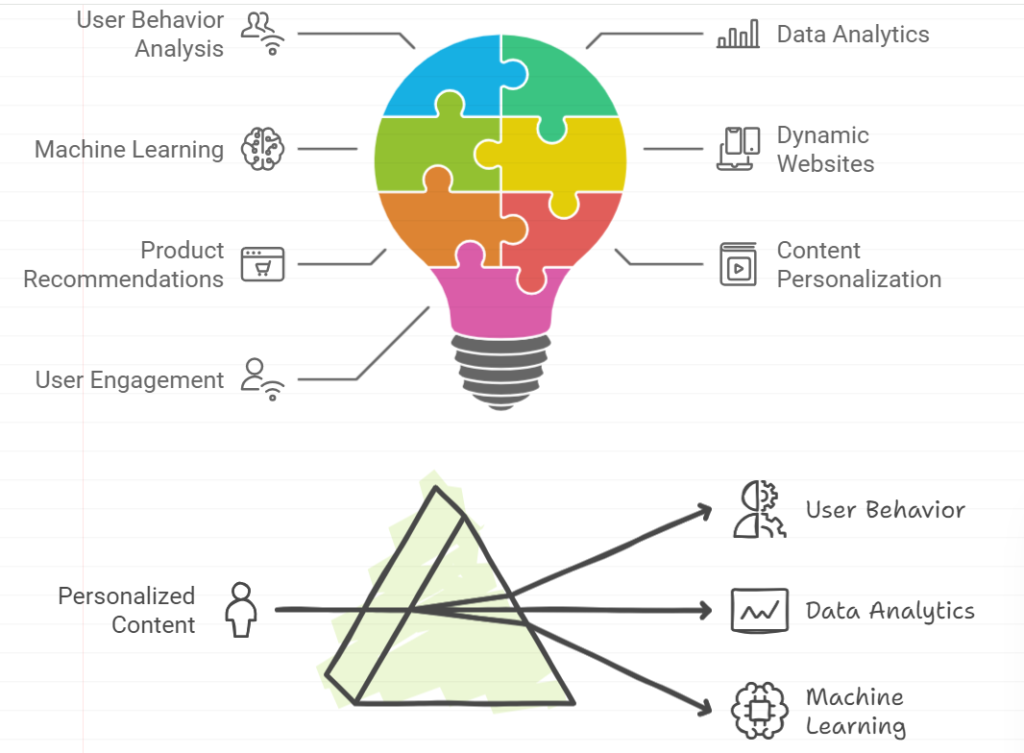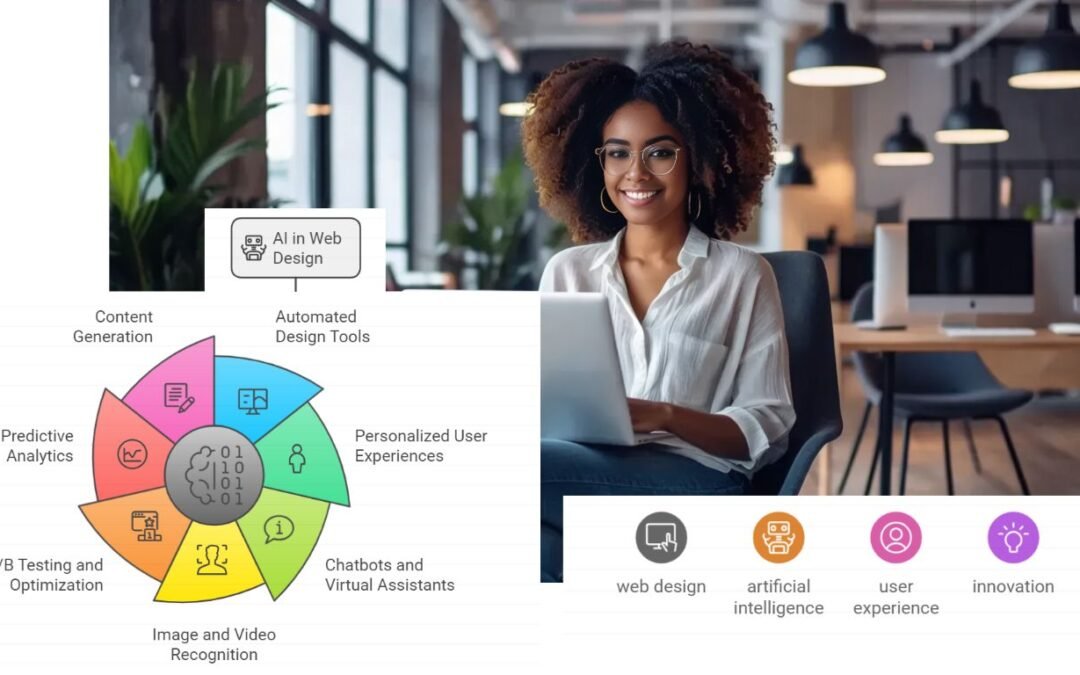AI for Web Design : In the rapidly evolving world of web design, artificial intelligence (AI) is becoming an indispensable tool for designers and developers alike. This document explores various ways to harness AI technologies to enhance the web design process, improve user experience, and streamline workflows. From automating repetitive tasks to providing personalized user experiences, AI offers a plethora of opportunities for innovation in web design.



Exploring the Benefits of AI for Web Design 2025″ dives into the transformative role artificial intelligence will play in shaping future web design. It highlights how AI tools will streamline processes, enhance user experience, and improve customization, leading to more efficient, responsive, and innovative websites. By leveraging machine learning and automation, designers can create dynamic, data-driven sites that adapt to user behavior and industry trends, reshaping the digital landscape for businesses and consumers alike.
1. Automated Design Tools
AI-powered design tools can significantly reduce the time and effort required to create visually appealing websites. Platforms like Adobe Sensei and Canva utilize machine learning algorithms to suggest design elements, layouts, and color schemes based on user preferences and current design trends. These tools can help designers quickly generate prototypes and iterate on designs, allowing for a more efficient workflow.

2. Personalized User Experiences
AI can analyze user behavior and preferences to deliver personalized content and experiences. By leveraging data analytics and machine learning, web designers can create dynamic websites that adapt to individual users. For instance, AI algorithms can recommend products, articles, or services based on a user’s past interactions, enhancing engagement and satisfaction.

3. Chatbots and Virtual Assistants
Integrating AI-driven chatbots and virtual assistants into websites can improve customer service and user interaction. These tools can handle common inquiries, provide instant support, and guide users through the website, making navigation easier. By automating these interactions, designers can focus on creating more complex and engaging elements of the site.

4. Image and Video Recognition
AI technologies can analyze images and videos to enhance accessibility and user experience. For example, AI can automatically generate alt text for images, making websites more accessible to visually impaired users. Additionally, AI can help in categorizing and tagging multimedia content, improving searchability and organization on the site.



5. A/B Testing and Optimization
AI can streamline the A/B testing process by analyzing user interactions and suggesting the most effective design variations. Machine learning algorithms can quickly identify which elements resonate with users, allowing designers to make data-driven decisions that enhance conversion rates and overall site performance.

6. Predictive Analytics
By utilizing predictive analytics, web designers can anticipate user needs and preferences. AI can analyze historical data to forecast trends and behaviors, enabling designers to create proactive solutions that cater to user demands. This foresight can lead to more successful design strategies and improved user retention.

7. Content Generation
AI tools like GPT-3 can assist in generating content for websites, from blog posts to product descriptions. By automating content creation, designers can save time and ensure that the website remains fresh and relevant. However, it’s essential to maintain a human touch in the content to ensure authenticity and connection with the audience.

AI for Web Design pros vs cons

Best AI for Web Design platform
- Divi theme :Automatically creates websites based on user input
- Wix ADI (Artificial Design Intelligence): Automatically creates websites based on user input.
- Bookmark: Uses AI to design custom websites in minutes with its Aida system.
- Zyro: Features AI tools for automatic content creation and design.
- Firedrop: Offers a chatbot-based web design process.
- Adobe Sensei: Enhances design capabilities within Adobe’s ecosystem with intelligent recommendations.
Conclusion: AI for Web Design 2025
Leveraging AI in web design not only enhances creativity and efficiency but also leads to more personalized and engaging user experiences. As technology continues to advance, designers who embrace AI tools will be better equipped to meet the demands of modern web users. By integrating these innovative solutions into their workflows, web designers can stay ahead of the curve and create websites that are not only visually stunning but also highly functional and user-centric.

